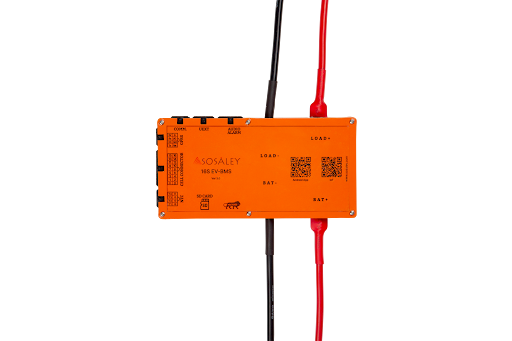BMS
Battery Management System
Our BMS is not just another electronic controller. It’s the brain behind your battery, ensuring every cell performs at its best—safely, smartly, and with maximum life.
Key Features of Our BMS
- Thermal Protection – Say goodbye to overheating. We maintain optimal thermal conditions with smart cutoffs and alarms.
- SoC and SoH – Know exactly how much power is left and how healthy your battery is—at all times.
- Cell-Level Voltage Monitoring – Every individual battery cell is checked for voltage. Nothing escapes.
- Cell Protections – Short-circuit? Over-voltage? Overcharging? Our BMS is equipped to handle it.
- Real-Time Alerts – Instant warnings when anything goes wrong, so you can act before it becomes a problem.
Why Choose Sosaley’s BMS?
- In-house R&D & Design Factory – We build every system from scratch—no third-party dependencies. That means faster customizations and better support.
- Built in India. Ready for the World. – Trusted by industry leaders and startups alike.
- Long-Term Support – You’re not just buying a product; you’re gaining a reliable partner in innovation.
Sosaley's 16S-BMS
Sosaley's 16S-BMS
Sosaley’s 16S-BMS

Features of our 16S-BMS:
- State of Charge (SOC) Management
- Temperature Management
- Cell Balancing
- Alerts
- Cloud Monitoring
Sosaley's HV-BMS(ESS)
Sosaley's HV-BMS(ESS)
Sosaley’s HV-BMS [ESS]
Lithium-ion batteries are increasingly becoming the preferred choice for energy storage systems because of their high energy density, long cycle life, and low maintenance requirements. However, these batteries require careful management to ensure their safety and longevity, which is where Sosaley’s HV-Battery Management System (HV-BMS) is designed to take care of Energy Storage System’s requirements.
Our HV-BMS is specifically designed to provide precise charging and discharging of lithium-ion batteries. The BMS constantly monitors the battery’s state of charge, temperature, and voltage and uses this data to optimise the battery’s performance and prevent any potential safety issues. It is flexible and compatible with a wide range of lithium-ion battery chemistries and configurations such as LFP, NMC, Li-Ion and LTO. Thus makes it suitable for a wide variety of energy storage applications.